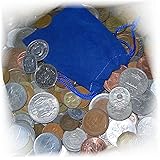An emergency fund is an excellent financial safety net that you can use in the event of a job loss, major medical expenses, or other unexpected events. Experts recommend saving up three to six months’ worth of living expenses to cover these types of emergencies.
You can build your emergency fund in several different ways, including with unexpected income and by putting money into an account that pays you interest. From savings accounts to money market accounts, there are a lot of options that can help you grow your emergency fund faster than you might expect.
DO Set Goals
To make saving for your emergency fund easier, start small and set aside a specific amount each month. Then, take baby steps and set a higher goal as you go along. That way, you’ll feel good about hitting your goals and be more likely to save up for larger ones in the future.
DO Keep It Risk-Free
You don’t want to invest your emergency fund in a volatile investment that could lose value or force you to sell the assets at a loss when you need the funds. In general, you should aim for more liquid assets like a certificate of deposit (CD), high-yield savings account, or other short-term investments that are easy to access when you need the cash.
DO Avoid Investing in More Volatile Assets
You should also be wary of investing your emergency fund in more volatile investments like real estate or stocks. These can be tempting investments because they often earn higher rates than traditional savings accounts, but you may end up losing your money when you need it.
DO Invest in a CD Ladder
If you want to earn more interest on your emergency fund, consider opening multiple certificates of deposit (CDs) with varying terms. This can be done at most banks and online savings institutions, and it can provide the best of both worlds: higher returns while maintaining access to your emergency fund.
DO Invest in High-Yield Savings Accounts
Many people are missing out on the potential for great returns when they invest their emergency fund in a savings account at a big bank. By putting your emergency funds in a high-yield savings account, you can take advantage of lower fees and potentially earn more than the national average.
DO Put Your Emergency Fund on Autopilot
To automatically transfer money into your emergency fund each month, consider setting up a direct transfer from your checking account or asking your employer to send a portion of your paychecks into a designated savings account. This is a simple and effective way to build up your savings, and you can easily rebuild your fund when you need it.
DO Ensure Your Emergency Fund is Tax-Efficient
You can make your emergency fund more tax-efficient by investing it in a qualified retirement plan or IRA. These types of plans offer tax benefits, and the money you withdraw from them can be withdrawn tax-free.









